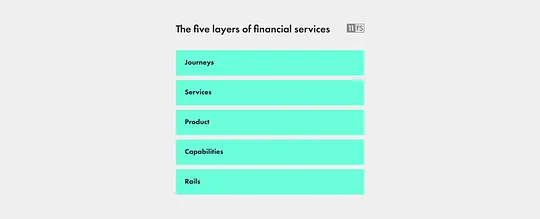Banking as a Service accelerates Open Banking adoption

This article was originally published in The Paypers’ ‘Open Banking Report 2021: Open Finance and the Race for Relevance and New Business Models in Banking'.
Banking as a Service accelerates Open Banking adoption.
The objective of Open Banking was to stimulate competition in the retail banking marketplace, but the nitty gritty of the execution is hidden behind technical APIs. It turns out that global regulators are likely to massively overachieve their goals and may well witness the dissolution of the banking industry as we know it. Banking as a Service (BaaS) is fuelling the innovative uses of Open Banking.
Banking as a Service (BaaS) is fuelling the innovative uses of Open Banking.
Open banking as viewed by innovators
Up until around 2010 the cost of entry into any part of the retail banking ecosystem was prohibitively high. The cost/risk/reward ratios discouraged new market entrants. As internet scale technologies became widely available the single most effective barrier to entry (technology investment) was dramatically lowered. When this coincided with Open Banking regulations and the UK PRA streamlining its licensing processes in 2014 it was enough to unlock a deluge of venture capital funding into fintech.
Incumbent firms have responded by spending billions on modernising their legacy systems while the rest of the market is spending billions on brand new, internet and cloud native technologies. In VC speak it's a race between innovators chasing distribution vs. incumbents chasing innovation. Who will win depends on which firms are best able to navigate the newly open world and deliver banking services that are best-of-breed combinations rather than vertically-integrated monoliths.
The five layers of financial services
At 11:FS we think of the financial services ecosystem as being a five layer stack. Each layer performs a financial function that now, thanks to Open Banking, can be offered independently as a service or in combination with components elsewhere in the stack.

At the base of the stack are the foundational functions of all financial services. Call them the ‘Rails’. This is where financial transactions are executed, e.g. via card networks, international and domestic payments. Value is stored and the ecosystem is regulated, licensed and even underwritten by government insurance. This is where Visa, Mastercard and Swift operate. Most money is made by interchange fees.
Above this sits a layer of ‘Capabilities’ that enable access to the financial services marketplace. Credit scoring, card issuing, KYC etc. Most money is made on a unit cost basis. This in turn supports a ‘Products’ layer where banks have traditionally delivered banking to consumers. Most money is made through net interest margin, fees and charges.
Above products is a layer of ‘Intelligent services’ that use the information collected at lower levels of the stack to engage more meaningfully with customers. This is where neobanks such as Monzo and Atom Bank have tried to differentiate themselves, e.g. an intelligent service could pay your bills only after your salary had cleared your account. Money is made indirectly in this layer through branded experience.
This is where neobanks such as Monzo and Atom Bank have tried to differentiate themselves
On top of the stack is a new layer where financial services are now embedded into non-financial experiences. Here consumer facing brands will help customers navigate complex journeys where financial components are required to achieve their multifaceted objectives such as ‘how do I buy, insure and run my car?’. These propositions are intelligent but also contextual and flexible. That is in response to a particular need of a given customer at a given point in time. They are personalised or, fashionably, hyper-personalised. Taken together these five layers constitute the financial services ecosystem.
Disintermediation as a service
Looking at this stack it is clear that there is massive room for growth in the embedded finance layer. Consumer facing brands will look to combine components from the layers beneath to optimise their customers’ experiences. They’ll work with whomever offers the best service and switch them out should they start to lag the market. For firms that are focusing on capabilities or rails, the objective will be to gain market share by delivering superior services that are consumed across the stack. For example Marqueta provides managed API access to licensed banks for fintech and consumer brands such as Kabbage and Square. Banks effectively lend their licenses and capital thus remaining relevant in the open banking ecosystem without having to contort their legacy systems to provide the type of services offered higher up the stack.
So at each layer companies can choose either to focus specifically on a single function or connect across layers to innovate and serve customers.
In summary we recognise that BaaS is less about offering what banks have traditionally done as vertically integrated operations. Rather the components that make up banks as we have historically seen them are now being offered individually ‘as a service’. Banking as a Service builds on Open Banking by deconstructing financial services fundamentals, disintermediating banking products and offering services to the marketplace that allow the creation of innovative and joined up propositions to customers who won’t see a bank logo at any point in their financial journey. The race may have been started by the open banking firing gun but the winner will be measured in market share of each component of the full stack ecosystem and who can combine these components as banking services in an intelligent, contextual and compelling way.



